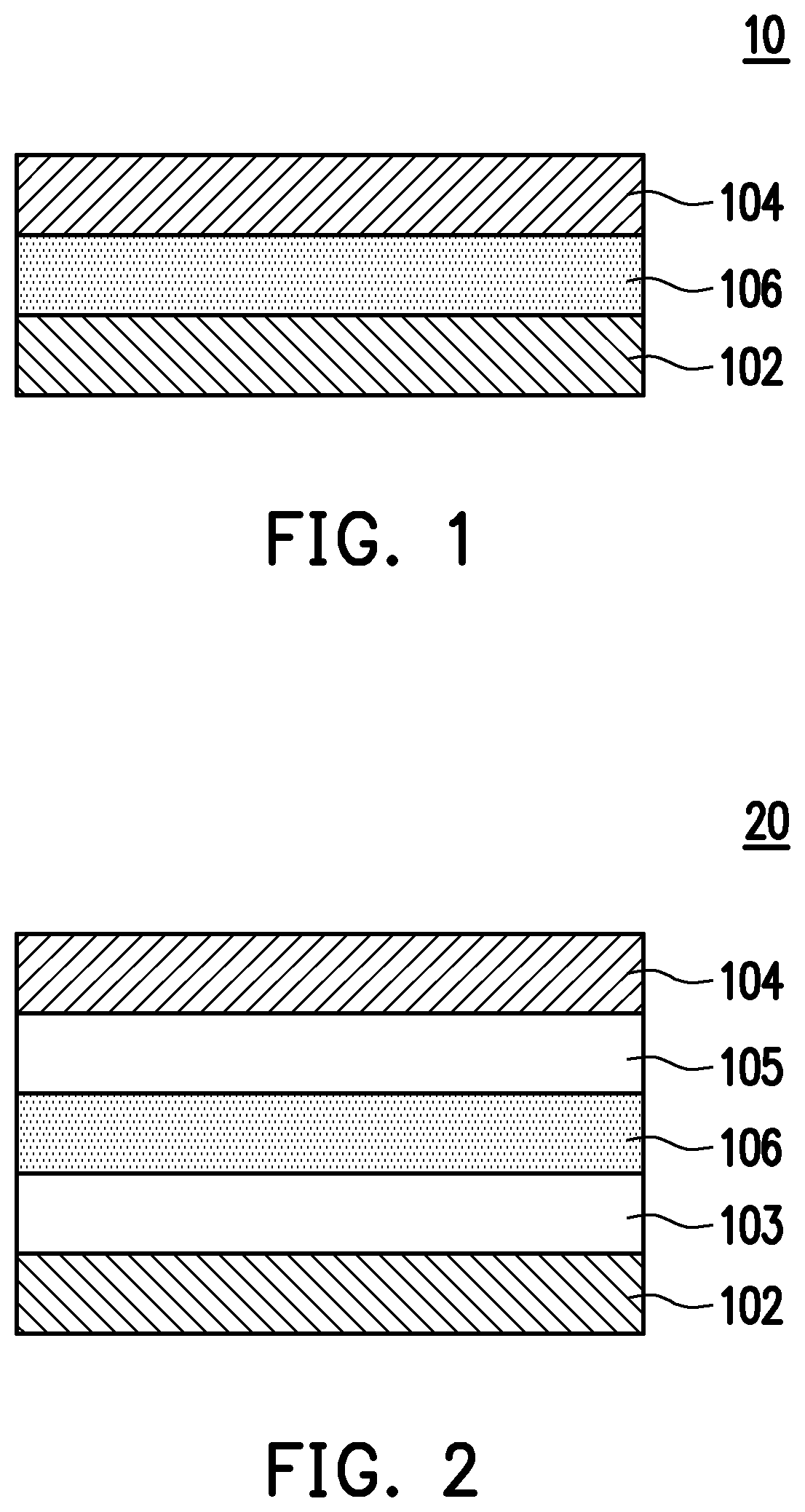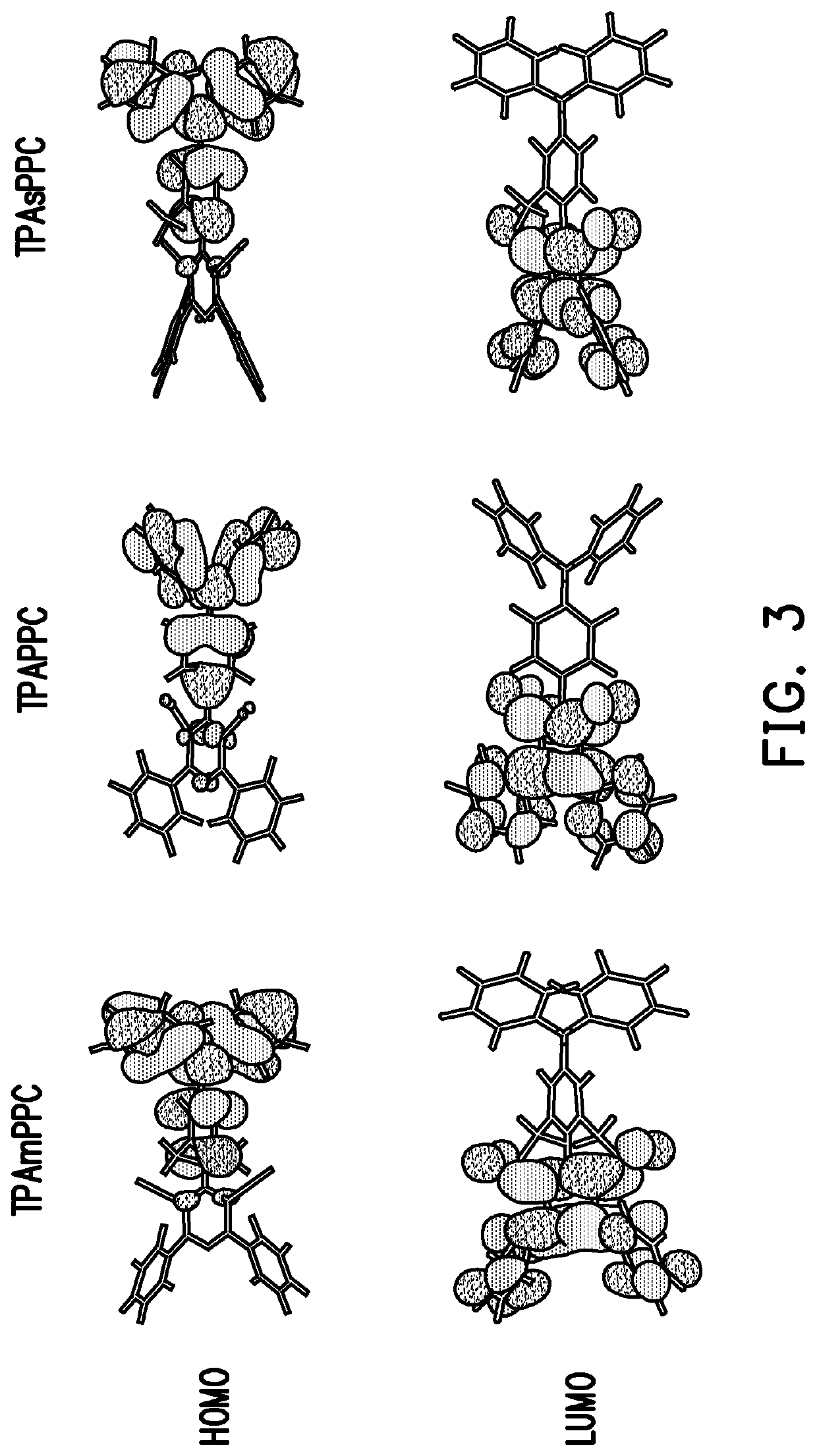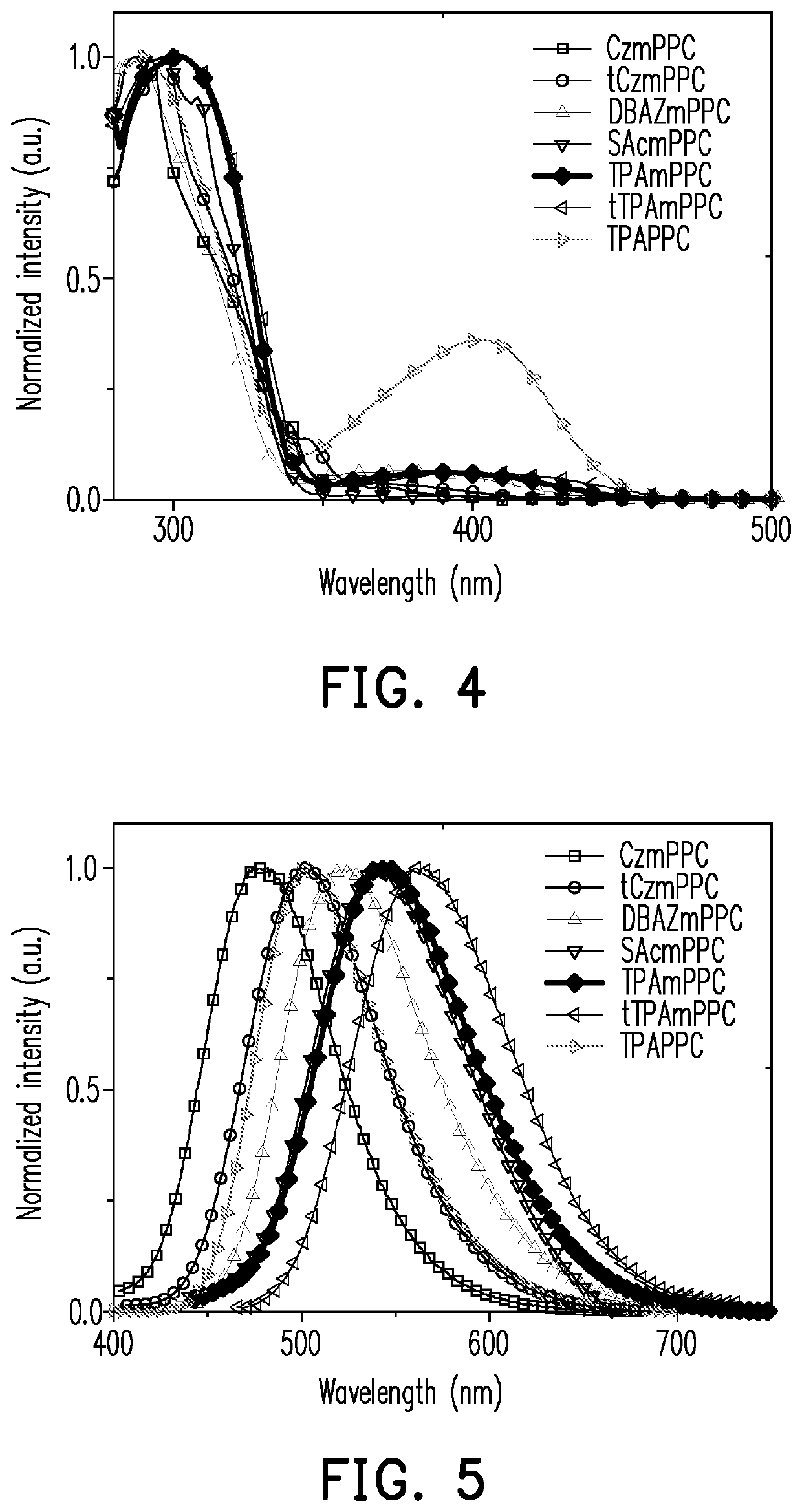Pyridine-carbonitrile compound and electroluminescent device including the same
a carbonitrile compound and pyridine technology, applied in the direction of luminescent compositions, organic chemistry, chemistry apparatus and processes, etc., can solve the problems of insufficient luminous efficiency of light-emitting elements, increased manufacturing costs of light-emitting elements, and less favorable commercial applications
- Summary
- Abstract
- Description
- Claims
- Application Information
AI Technical Summary
Benefits of technology
Problems solved by technology
Method used
Image
Examples
synthesis example 1
Synthesis of Intermediate Product I-1 (4-(9H-carbazol-9-yl)-2,6-dimethylbenzaldehyde)
[0070]
[0071]A compound 9-(4-bromo-3,5-dimethylphenyl)-9H-carbazole (1 g, 2.9 mmol) was placed in a double-necked flask, sealed with a serum stopper, dry tetrahydrofuran (THF) (19 mL, 0.15 M) was added from a side port, and the system was cooled to −78° C. in an acetone bath. Under nitrogen, n-butyllithium (n-BuLi) (1.73 mL, 4.3 mmol) was slowly added with a plastic syringe to obtain an orange solution, and the solution was kept in the acetone bath for 1 hour.
[0072]Next, under nitrogen, dry dimethylformamide (DMF) (0.64 g, 8.7 mmol) was added with a syringe, and the solution was kept in the acetone bath for another 1 hour, and then reacted overnight. After the reaction was over, water was added, and excess alkali was neutralized with a hydrochloric acid aqueous solution. Ethyl acetate extraction was performed three times, followed by rotary concentration. Then, the mixture was purified by column chro...
synthesis example 2
Synthesis of Intermediate Product I-2 (4-(3, 6-di-tert-butyl-9H-carb azol-9-yl)-2, 6-dimethylbenzaldehyde)
[0074]
[0075]A compound 9-(4-bromo-3,5-dimethylphenyl)-3,6-di-tert-butyl-9H-carbazole (1 g, 2.2 mmol) was placed in a double-necked flask, sealed with a serum stopper, dry THF (14 mL, 0.15 M) was added from a side port, and the system was cooled to −78° C. in an acetone bath. Under nitrogen, n-BuLi (1.31 mL, 3.2 mmol) was slowly added with a plastic syringe to obtain an orange solution, and the solution was kept in the acetone bath for 1 hour. Next, under nitrogen, dry DMF (0.47 g, 6.5 mmol) was added with a syringe, and the solution was kept in the acetone bath for another 1 hour, and then reacted overnight. After the reaction was over, water was added, and excess alkali was neutralized with a hydrochloric acid aqueous solution. Ethyl acetate extraction was performed three times, followed by rotary concentration. Then, the mixture was purified by column chromatography (eluent: e...
synthesis example 3
Synthesis of Intermediate Product I-3 (4-(5H-dibenzo[b,f]azepin-5-yl)-2,6-dimethylbenzaldehyde)
[0077]
[0078]A compound 5-(4-bromo-3,5-dimethylphenyl)-5H-dibenzo[b,f]azepine (0.3 g, 0.8 mmol) was placed in a double-necked flask, sealed with a serum stopper, dry THF (8 mL, 0.1 M) was added from a side port, and the system was cooled to −78° C. in an acetone bath. Under nitrogen, n-BuLi (0.48 mL, 1.8 mmol) was slowly added with a plastic syringe to obtain an orange solution, and the solution was kept in the acetone bath for 1 hour. Next, under nitrogen, dry DMF (0.18 g, 2.4 mmol) was added with a syringe, and the solution was kept in the acetone bath for another 1 hour, and then reacted overnight. After the reaction was over, water was added, and excess alkali was neutralized with a hydrochloric acid aqueous solution. Ethyl acetate extraction was performed three times, followed by rotary concentration. Then, the mixture was purified by column chromatography (eluent: ethyl acetate / n-hexa...
PUM
 Login to View More
Login to View More Abstract
Description
Claims
Application Information
 Login to View More
Login to View More - R&D
- Intellectual Property
- Life Sciences
- Materials
- Tech Scout
- Unparalleled Data Quality
- Higher Quality Content
- 60% Fewer Hallucinations
Browse by: Latest US Patents, China's latest patents, Technical Efficacy Thesaurus, Application Domain, Technology Topic, Popular Technical Reports.
© 2025 PatSnap. All rights reserved.Legal|Privacy policy|Modern Slavery Act Transparency Statement|Sitemap|About US| Contact US: help@patsnap.com



